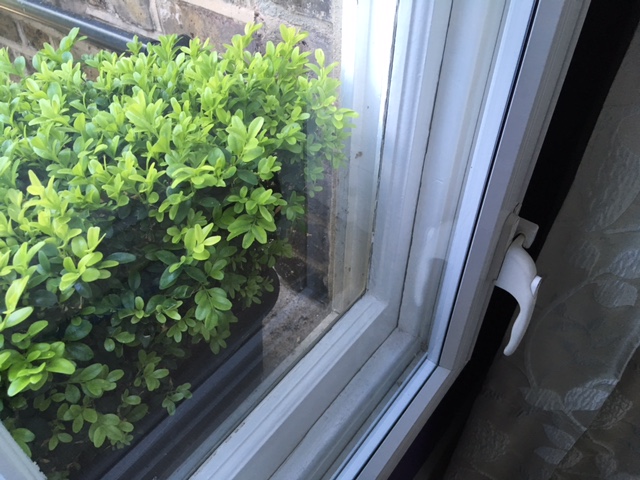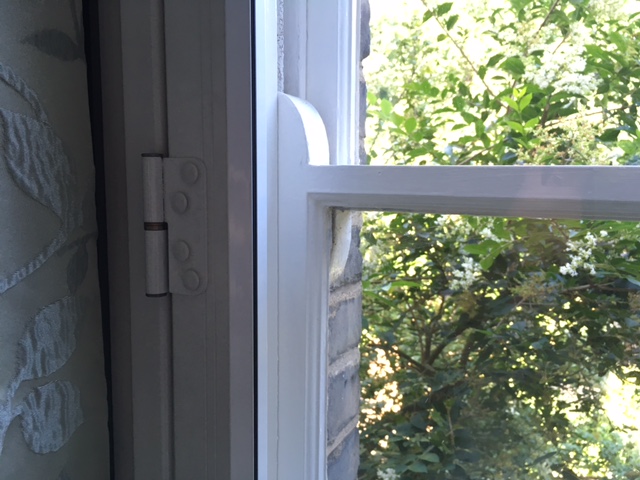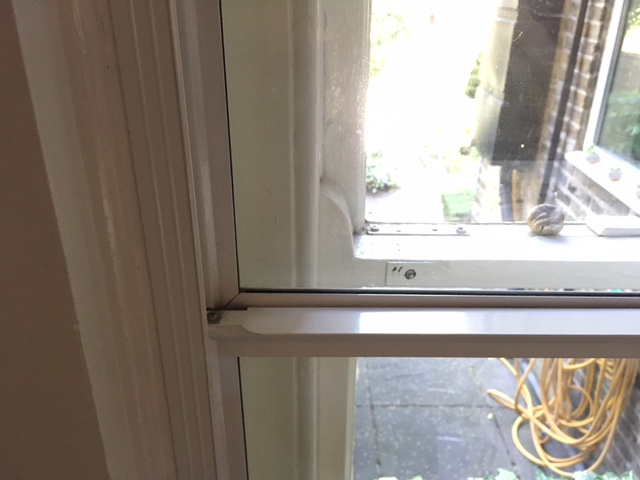Secondary glazing

|

|
| Side hung single pane | Side hung, behind sash window |

|

|
| Vertical slider aligned with sash window | Vertical slider aligned with sash window |
Secondary glazing involves the installation of an additional pane of glass and frame to existing windows. This can be used as an alternative to double glazing which involves the removal and replacement of existing windows. It can be used to improve sound insulation and to reduce heat loss and draughts through windows.
Secondary glazing is considered most suitable for:
- Listed buildings, period properties and heritage/conservation areas.
- Areas where there is traffic noise (such as hotels on main roads).
- Properties where it may be uneconomical to install double glazing.
- Properties where it would be difficult to modify existing external windows (such as single glazed timber sash windows).
- Windows that require noise reduction, draught reduction, and so on.
Secondary glazing can be manufactured in a range of styles, shapes materials and colours to match existing windows and blend in with the property. The method of opening can be designed to suit the existing window, such as a single pane side opening window, a vertical slider, and so on. The frame can generally be aligned with the frame of the existing window to minimise the visual impact of the secondary glazing.
Units are typically made to measure and pre-drilled, making them easy to instal by face fixing them directly onto the existing windows or fixing them into the window reveal set back from the existing windows.
Removable systems can also be installed. These tend to be clear sheets of polycarbonate or acrylic plastic which can be removed in periods of hot weather.
The effectiveness of secondary glazing is largely due to the air gap or cavity that is created between the two points of contact – the primary window and the secondary glazing. This should be around 70-200 mm in order to optimise sound and heat performance.
It is recommended that a different glass thickness is used for the secondary glazing than for the existing windows, as this creates an effect called the Resonation Factor, in which different wavelengths of sound are blocked by different glass thicknesses resonating at different frequencies.
Fitting secondary glazing on the inside of windows is considered an effective and cost-efficient solution for listed and historic buildings; particularly because it is a reversible alteration that is unobtrusive to the existing windows, helping to retain their original character, and also because its installation does not generally require planning permission.
Compared to double glazing, secondary glazing can be cheaper and can be done as a DIY job rather than having to rely on a fitting company. However, it is thought that double glazing is about twice as effective in terms of heat retention.
See also: Double glazing v triple glazing.
[edit] Related articles on Designing Buildings Wiki
Featured articles and news
Professional practical experience for Architects in training
The long process to transform the nature of education and professional practical experience in the Architecture profession following recent reports.
A people-first approach to retrofit
Moving away from the destructive paradigm of fabric-first.
International Electrician Day, 10 June 2025
Celebrating the role of electrical engineers from André-Marie Amperè, today and for the future.
New guide for clients launched at Houses of Parliament
'There has never been a more important time for clients to step up and ...ask the right questions'
The impact of recycled slate tiles
Innovation across the decades.
EPC changes for existing buildings
Changes and their context as the new RdSAP methodology comes into use from 15 June.
Skills England publishes Sector skills needs assessments
Priority areas relating to the built environment highlighted and described in brief.
BSRIA HVAC Market Watch - May 2025 Edition
Heat Pump Market Outlook: Policy, Performance & Refrigerant Trends for 2025–2028.
Committing to EDI in construction with CIOB
Built Environment professional bodies deepen commitment to EDI with two new signatories: CIAT and CICES.
Government Grenfell progress report at a glance
Line by line recomendation overview, with links to more details.
An engaging and lively review of his professional life.
Sustainable heating for listed buildings
A problem that needs to be approached intelligently.
50th Golden anniversary ECA Edmundson apprentice award
Deadline for entries has been extended to Friday 27 June, so don't miss out!
CIAT at the London Festival of Architecture
Designing for Everyone: Breaking Barriers in Inclusive Architecture.
Mixed reactions to apprenticeship and skills reform 2025
A 'welcome shift' for some and a 'backwards step' for others.





















